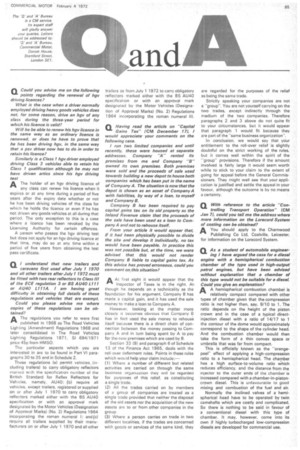Q As a student of automobile engineer
Page 89

If you've noticed an error in this article please click here to report it so we can fix it.
ing I have argued the case for a diesel engine with a hemispherical combustion chamber of the type used in high-output petrol engines, but have been advised without explanation that a chamber of this type would not be suitable for a diesel. Could you give an. explanation?
AA hemispherical combustion chamber is
relatively compact compared with other types of chamber given that the compression ratio is not higher than, say. 9/10 to 1. The ratio depends on the height of the piston crown and in the case of a typical directinjection diesel with a ratio of 14/17 to 1 the contour of the dome would approximately correspond to the shape of the cylinder head. And the combustion chamber would then take the form of a thin convex space or umbrella that was far from compact.
This is officially known as the "orangepeel" effect of applying a high-compression ratio to a hemispherical head. The chamber has a high surface-to-volume ratio which reduces efficiency, and the distance from the injector to the outer ends of the chamber is increased compared with a chamber-in-pistoncrown diesel. This is unfavourable to good mixing and combustion of the fuel and air.
Normally the inclined valves of a hemispherical head have to be operated by twin camshafts which are costly and complicated. So there is nothing to be said in favour of a conventional diesel with this type of chamber. It may, however, come into its own if highly turbocharged low-compression diesels are developed for commercial use.














































































































































